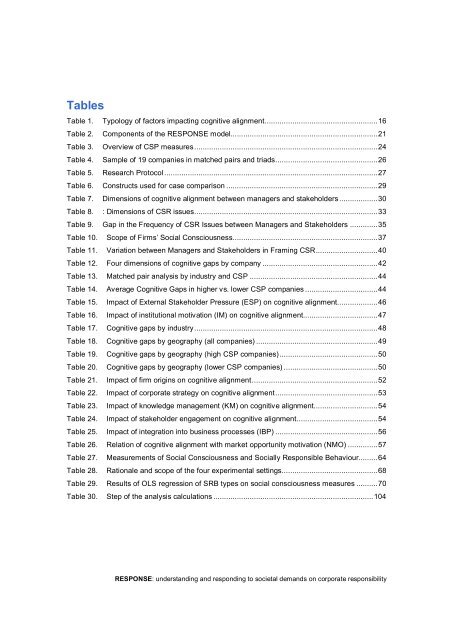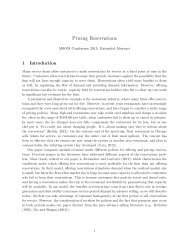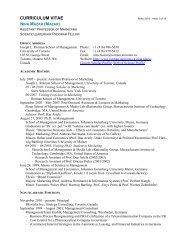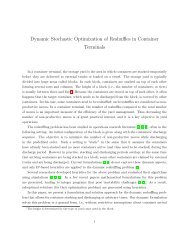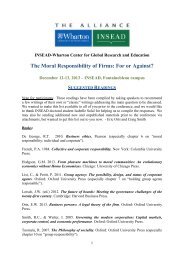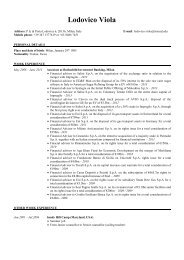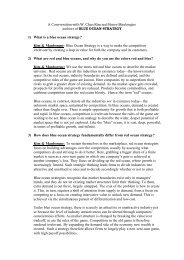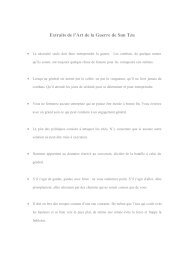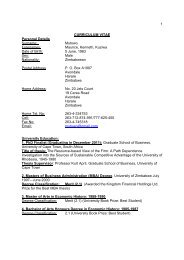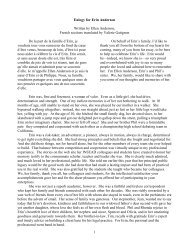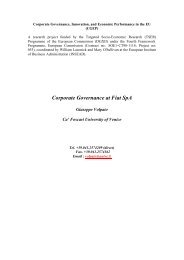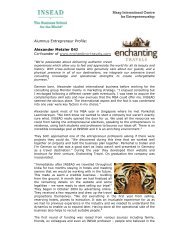RESPONSE - Insead
RESPONSE - Insead
RESPONSE - Insead
You also want an ePaper? Increase the reach of your titles
YUMPU automatically turns print PDFs into web optimized ePapers that Google loves.
Tables<br />
Table 1. Typology of factors impacting cognitive alignment.....................................................16<br />
Table 2. Components of the <strong>RESPONSE</strong> model.....................................................................21<br />
Table 3. Overview of CSP measures......................................................................................24<br />
Table 4. Sample of 19 companies in matched pairs and triads................................................26<br />
Table 5. Research Protocol ....................................................................................................27<br />
Table 6. Constructs used for case comparison .......................................................................29<br />
Table 7. Dimensions of cognitive alignment between managers and stakeholders..................30<br />
Table 8. : Dimensions of CSR issues......................................................................................33<br />
Table 9. Gap in the Frequency of CSR Issues between Managers and Stakeholders .............35<br />
Table 10. Scope of Firms’ Social Consciousness....................................................................37<br />
Table 11. Variation between Managers and Stakeholders in Framing CSR.............................40<br />
Table 12. Four dimensions of cognitive gaps by company ......................................................42<br />
Table 13. Matched pair analysis by industry and CSP ............................................................44<br />
Table 14. Average Cognitive Gaps in higher vs. lower CSP companies ..................................44<br />
Table 15. Impact of External Stakeholder Pressure (ESP) on cognitive alignment...................46<br />
Table 16. Impact of institutional motivation (IM) on cognitive alignment...................................47<br />
Table 17. Cognitive gaps by industry......................................................................................48<br />
Table 18. Cognitive gaps by geography (all companies) .........................................................49<br />
Table 19. Cognitive gaps by geography (high CSP companies)..............................................50<br />
Table 20. Cognitive gaps by geography (lower CSP companies) ............................................50<br />
Table 21. Impact of firm origins on cognitive alignment...........................................................52<br />
Table 22. Impact of corporate strategy on cognitive alignment................................................53<br />
Table 23. Impact of knowledge management (KM) on cognitive alignment..............................54<br />
Table 24. Impact of stakeholder engagement on cognitive alignment......................................54<br />
Table 25. Impact of integration into business processes (IBP) ................................................56<br />
Table 26. Relation of cognitive alignment with market opportunity motivation (NMO) ..............57<br />
Table 27. Measurements of Social Consciousness and Socially Responsible Behaviour.........64<br />
Table 28. Rationale and scope of the four experimental settings.............................................68<br />
Table 29. Results of OLS regression of SRB types on social consciousness measures ..........70<br />
Table 30. Step of the analysis calculations ...........................................................................104<br />
<strong>RESPONSE</strong>: understanding and responding to societal demands on corporate responsibility


